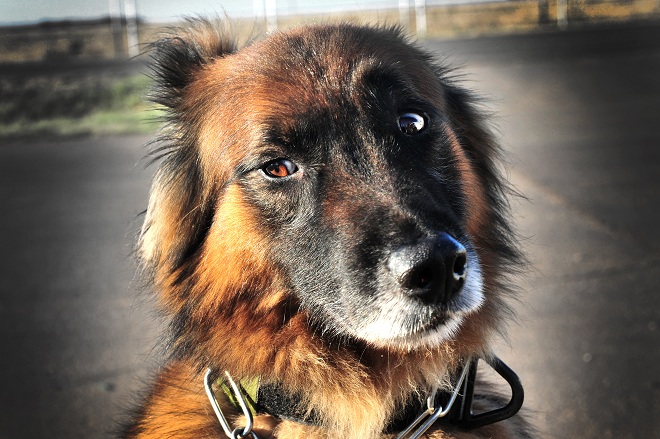DARPA’s plan to recruit military dogs: scan their brains
January 28, 2013

“Suk,” an Air Force working dog, training at Cannon Air Force Base, New Mexico (credit: U.S. Air Force)
According to a new research solicitation from DARPA, the FIDOS (Functional Imaging to Develop Outstanding Service-Dogs) project touts the idea of using magnetic image resonators (MRIs) to “optimize the selection of ideal service dogs” by scanning their brains to find the smartest candidates, Wired Danger Room reports.
Last year, Emory University neuroscientist Greg Berns and his colleagues trained dogs to sit unrestrained inside an MRI machine, shown hand signals associated with a food reward, and then scanned. Perhaps unsurprisingly, the researchers noticed increased brain activity in the dogs’ ventral caudate, a region of the brain associated with the neurotransmitter dopamine.
The agency believes it may be possible to screen “high-value service dogs … based on their neutral activation to specific handler training cues,”. The idea is that dogs who show greater brain activity when given such cues will be “faster and easier to train” than dogs that show less activity.
And instead of merely using approximations of something the dog wants, to make the dog do something else, handlers could fine-tune their techniques to more closely match the chemical responses happening inside the dog’s head.
Neuroimaging may also help spot “brain hyper-social dogs.” These very social dogs, once scanned and located, could be selected for use in rehabilitative therapy for soldiers exhibiting symptoms of post-traumatic stress disorder and traumatic brain injuries.